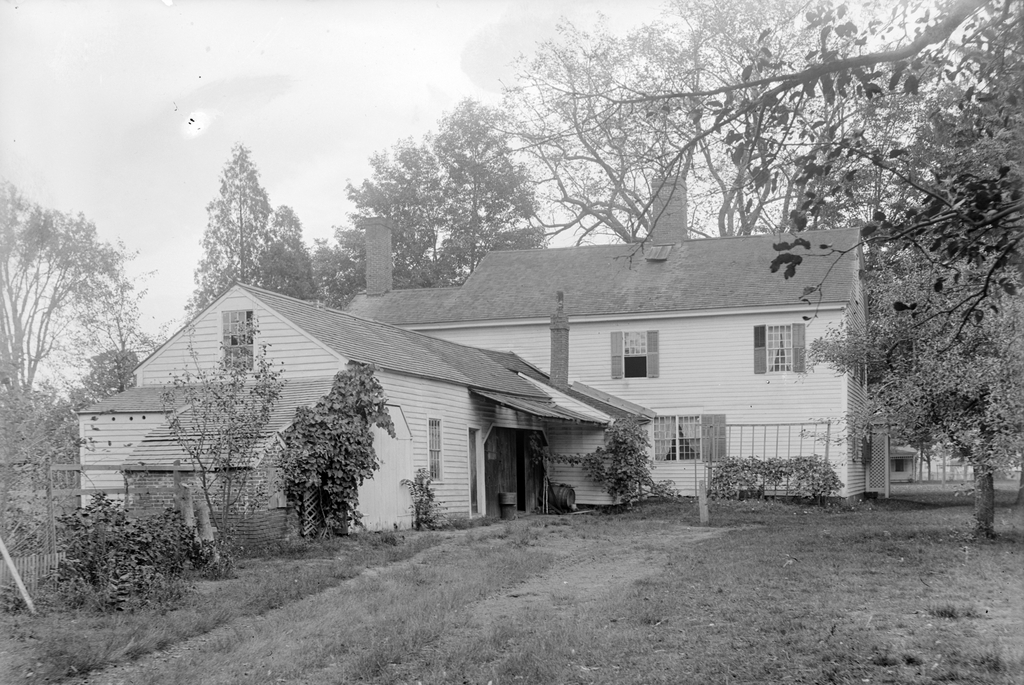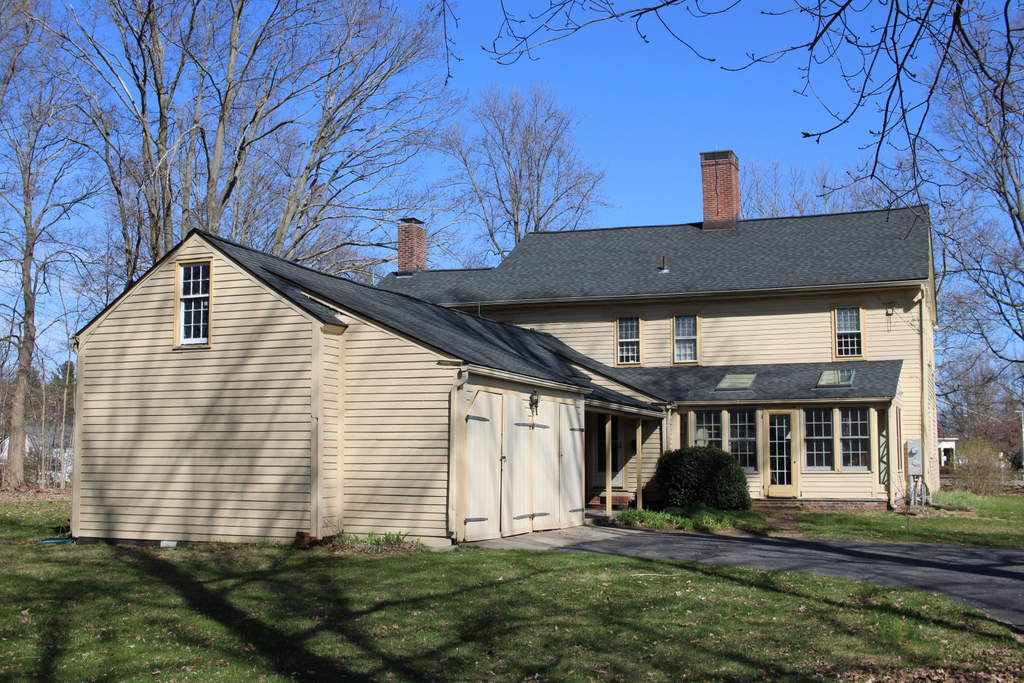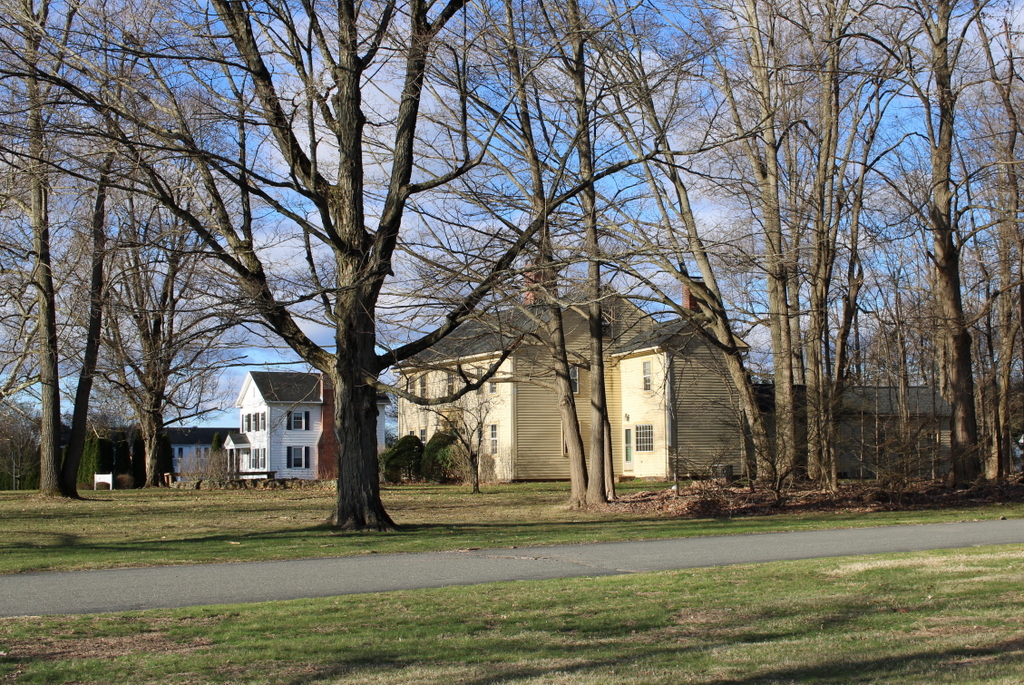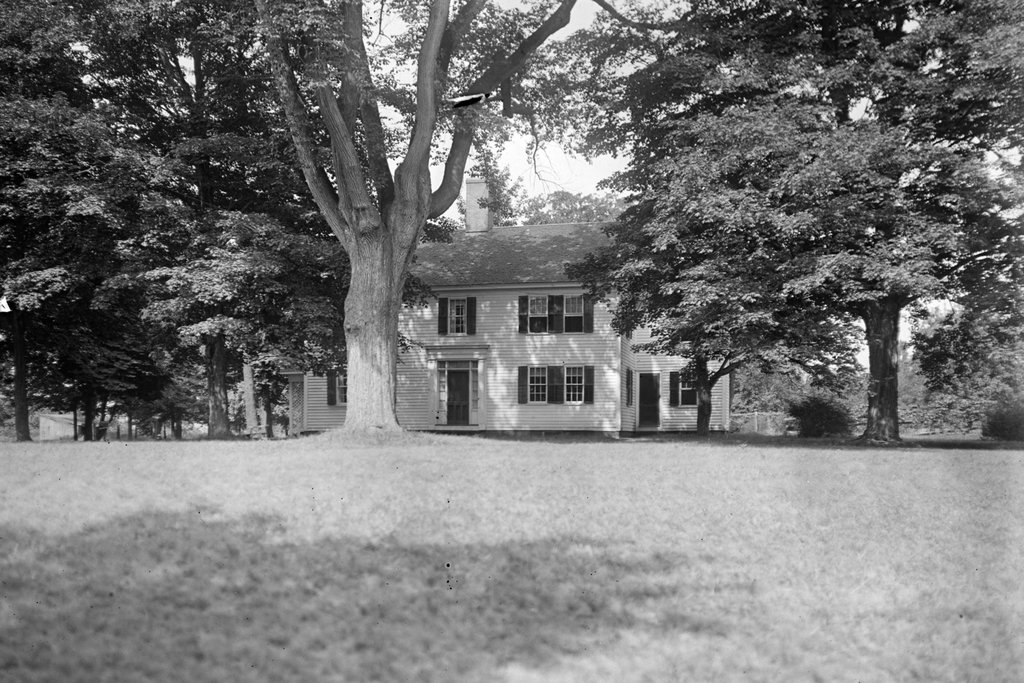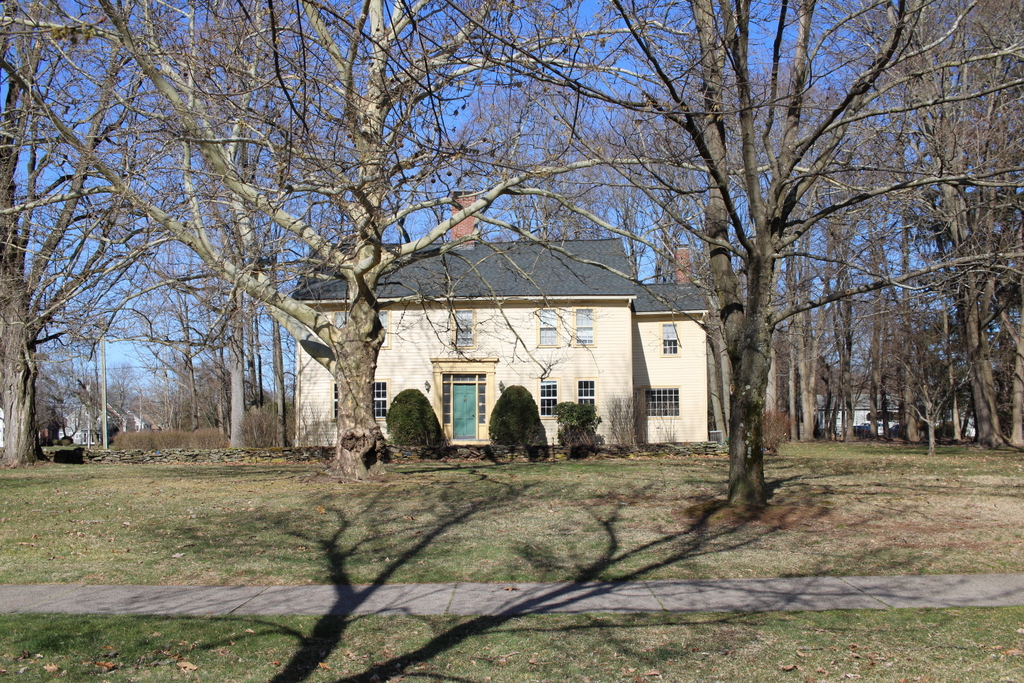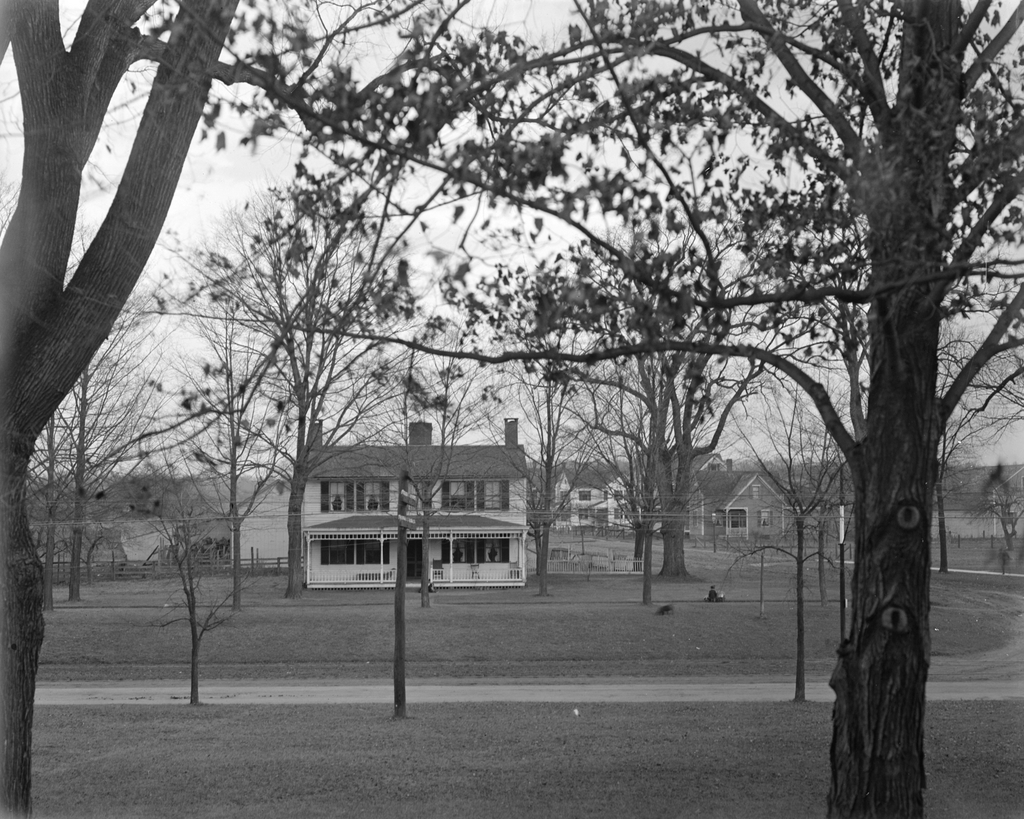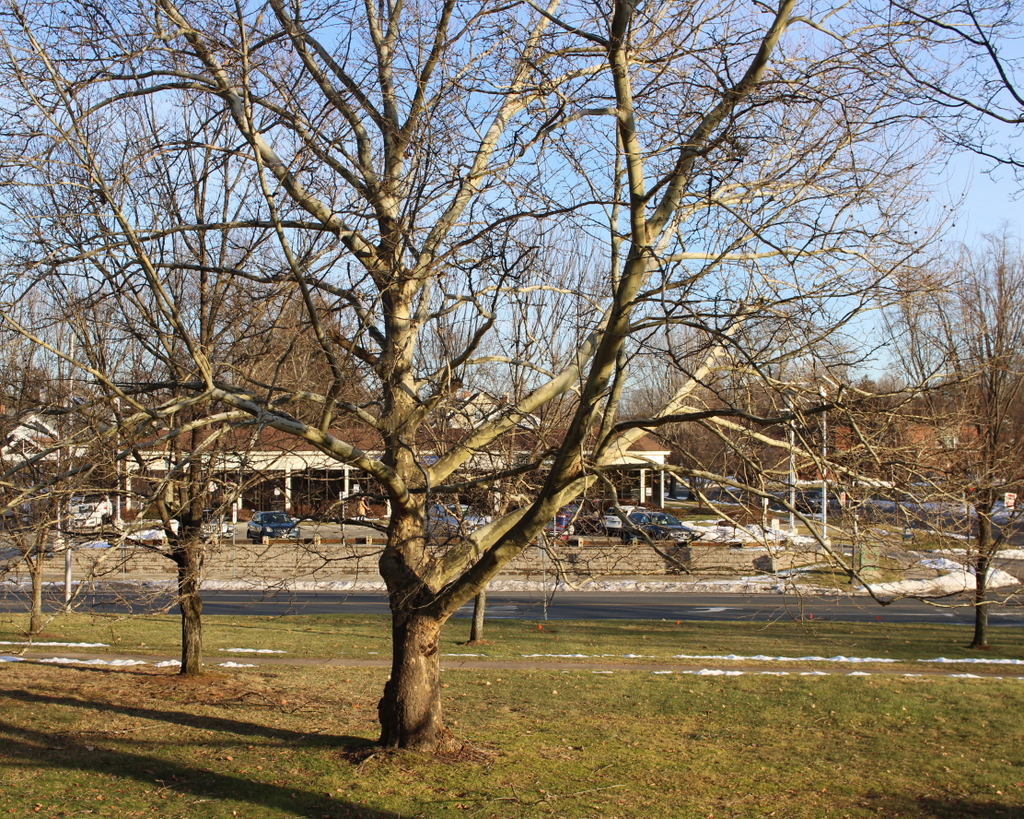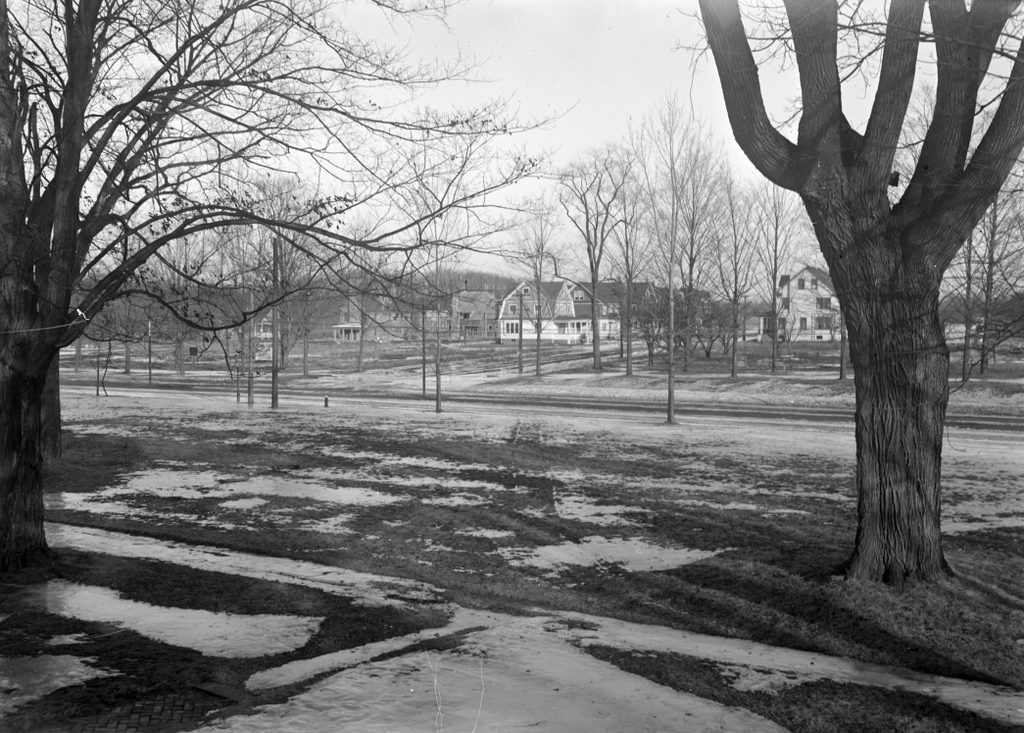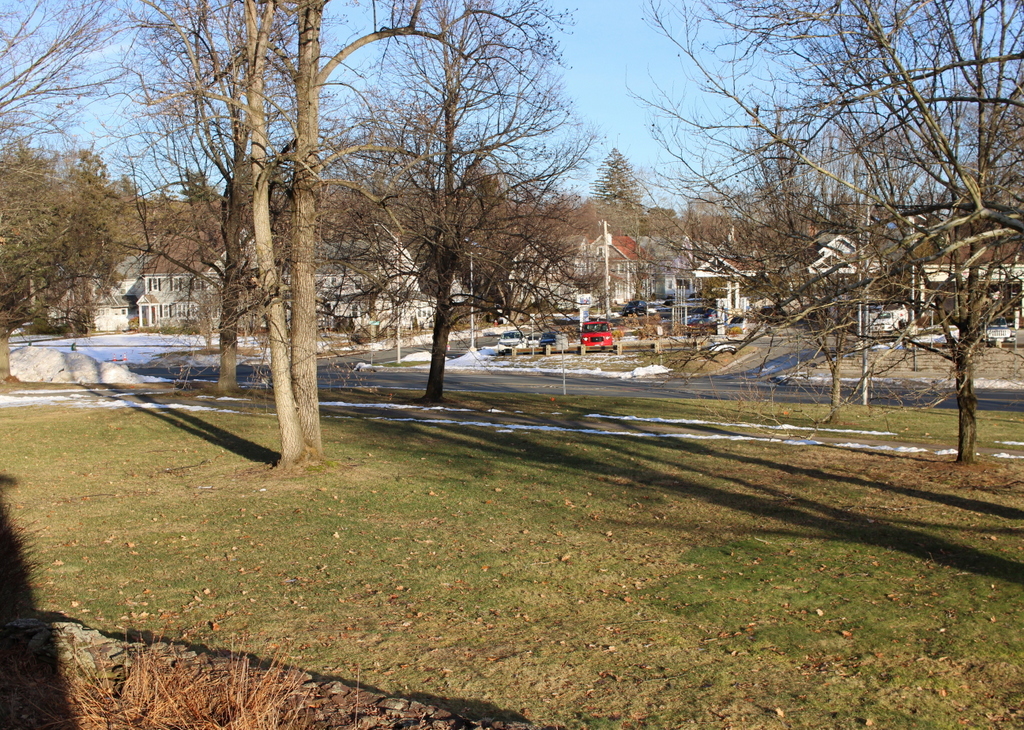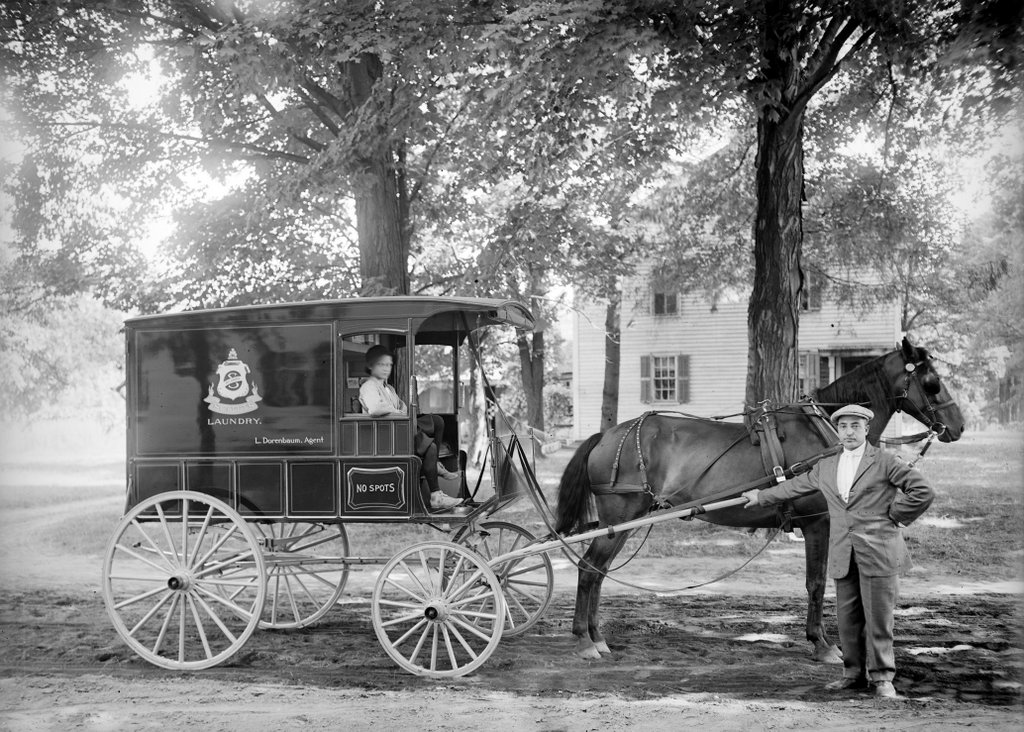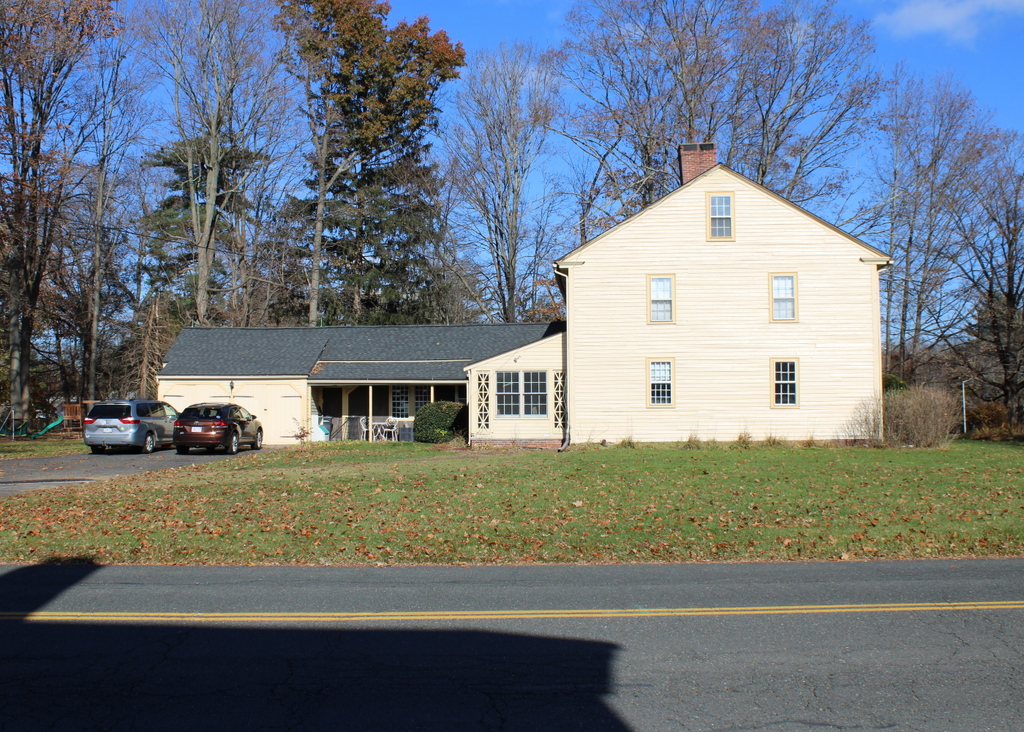The back of the house at the corner of Longmeadow Street and Emerson Road in Longmeadow, on November 17, 1907. Image courtesy of the Longmeadow Historical Society, Paesiello Emerson Collection.
The scene in 2024:
These two photos show the back of the Josiah Cooley House, which was built sometime around 1760, as explained in more detail in an earlier post. The house has seen considerable changes over the years, as was often the case with colonial New England homes which grew as the families grew. This house was originally built as a saltbox-style house, with four rooms on the first floor, two rooms on the front part of the second floor, and a long, sloping roof here in the back. It was originally owned by Josiah Cooley and his son, Josiah Cooley Jr., and then by the younger Josiah’s daughter Lucy and her husband Luther Colton.
Around 1827–1835, the house underwent significant alterations and additions. This included raising the roof to create a full second story, and it also involved building two additions. In the distance on the left side of the house is a two story addition that has its own chimney. This was built for one of Lucy and Luther’s children, Luther Woolworth Colton, who lived in that part of the house after his 1835 marriage to Abigail Morris. Around this same time, the Colton family also added the one-story wing here in the foreground, which appears to have been primarily used as a workshop and/or shed, rather than as living space.
Other changes during this period included upgrading the windows on the front part of the house. Originally, the windows had 12 panes of glass on each sash, a style that is referred to as 12-over-12. However, as glassmaking improved in the early 19th century, larger panes of glass became easier to produce, and 6-over-6 windows became the preferred style for most homeowners. The Coltons replaced the windows in the front of the house, but rather than discarding the old ones, they repurposed them here on the back, where the windows were installed in the additions, where they would be less visible from the street. These windows were still on the house when the top photo was taken in 1907.
The Colton family eventually sold the house in 1869 to Bradford W. Palmer, and then he sold it three years later to William G. Emerson. It would remain in the Emerson family for more than 70 years, and by the time the top photo was taken it was owned by William’s daughter Annie, who lived here with her brother Henry and half brother Paesiello. Annie was a teacher, and she was also the town historian. She spent a considerable amount of time researching the history of this house, and her brother Paesiello took many photographs of the house, on both the interior and exterior. Together, her written account and his photography provide valuable information about the history of the house and the changes that it underwent.
Henry Emerson was the last of the family to live in this house, and he died in 1943. The house was subsequently sold, and over the years it has seen further changes. Most noticeably, this has included the expansion of the back wing, which now has a two-car garage. Next to the garage is a small covered porch, along with a door that leads into the back of the house. Another newer addition is the enclosed porch on the right side. On the second floor, there is now a third window, which was installed when one of the rooms was divided into two bathrooms during a mid-1940s remodel of the house.
Overall, despite these changes, the house has retained much of its historic appearance. The front of the house has remained mostly unchanged since the early 20th century, and the changes here in the back have generally been sensitive to its historic character. Many of the original 12-over-12 windows are also still here, including the double windows on the first floor, which are hard to see from this angle because of the enclosed porch.

